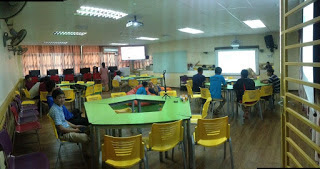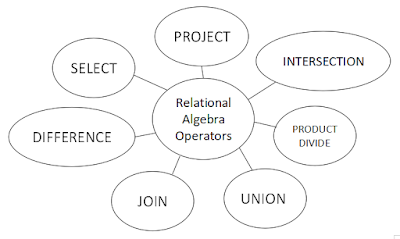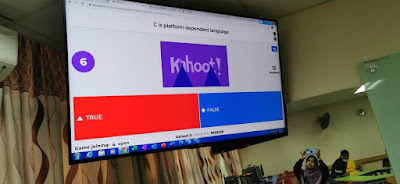Chapter 3
Chapter 3: Data Relational Model
In this chapter, we learned about the basic concepts of database model using entity-relationship diagram and translating completed data models by applying normalization technique in logical database designs. We also learned about how to apply Structured Query Language (SQL) for database manipulation using a database management system in practical works inclusive of a report within stipulated time frame. Lastly, demonstrate problem solving skill in developing new database applications based on an assigned problem.
Before we start the topic on that day, we submitted our End Of Chapter3 (EOC3) assigned last week by Madam Shamsiah. In Data Relational Model represents the database as a collection of relations. A relations is nothing but a table of values. Every row in the table represents a collection of related data values. These rows in the table denote a real-world entity or relationship. The table name and column names are helpful to interpret the meaning of values in each row. The data are represented as a set of relations. In the relational model, data are stored as able. However, the physical storage of the data is independent of the way the data are logically organized.
Structure of Relational Data:-
- Attributes- a named column of a relation.
- Domain- The set of allowable values for one or more attributes.
- Tuple- a row of a relation.
- Degree- The degree of a relation is the number of attributes it contains.
- Cardinality- Numbers of tuple in a relation.
Relational Integrity
Computer database in which all data is stored in Relations which (to the user) are tables with rows and columns. Each table is composed of records (called Tuples) and each record is identified by a field (attribute) containing a unique value. Every table shares at least one field with another table in 'one to one,' 'one to many,' or 'many to many' relationships. These relationships allow the database user to access the data in almost an unlimited number of ways, and to combine the tables as building blocks to create complex and very large databases.
Relational Algebra
The relational algebra is a theoretical language with operations that work on one or more relations to define another relation without changing the original relation(s). Both the operands and the results are relations.
Normalization
For this subtopic, we had a presentation of the difference between First Normal Form(1NF), Second Normal Form(2NF), Third Normal Form(3ND) and Boyce-Codd Normal Form(BCNF). We were divided to four groups and each group was present for about 25minutes above and the presentation was amazing. We had so much fun that day because of jokes and question and answer session .
After we finished our presentation session, as soon as usual we doing Kahoot at the end of the class. All of s played Kahoot and the winner is Iffah, Zainal and Lyster. Their prize is given next week because the prize is very special. We end our class with tidied up the TECC Room and collect all the rubbish at the room.







belajar Relational Data chapter 3 berjalan dengan baik dan lancar alhamdulillah, mudah difahami di ajar oleh Puan Shamsiah. Semasa kami belajar tu, kami dikenalkan oleh Puan Shamsiah tentang Attributes, domains dan sebaginya
ReplyDeleteChapter 3 ini , kami diajar serta difahamkan tentang Attributes , domain , tuple dan sebagainya . Kami juga difahamkan mengenai jenis-jenis Relational Algebra dan Relational Integrity.
ReplyDeleteSesi pembelajaran di tecc sangatlah selesa dan tenang lebih lebih lagi bangku, kerusi , PC, dan layar skrin untuk pembentangan semuanya lengkap tersedia.
ReplyDelete